Sachin Katti
PIM: Video Coding using Perceptual Importance Maps
Dec 20, 2022Abstract:Human perception is at the core of lossy video compression, with numerous approaches developed for perceptual quality assessment and improvement over the past two decades. In the determination of perceptual quality, different spatio-temporal regions of the video differ in their relative importance to the human viewer. However, since it is challenging to infer or even collect such fine-grained information, it is often not used during compression beyond low-level heuristics. We present a framework which facilitates research into fine-grained subjective importance in compressed videos, which we then utilize to improve the rate-distortion performance of an existing video codec (x264). The contributions of this work are threefold: (1) we introduce a web-tool which allows scalable collection of fine-grained perceptual importance, by having users interactively paint spatio-temporal maps over encoded videos; (2) we use this tool to collect a dataset with 178 videos with a total of 14443 frames of human annotated spatio-temporal importance maps over the videos; and (3) we use our curated dataset to train a lightweight machine learning model which can predict these spatio-temporal importance regions. We demonstrate via a subjective study that encoding the videos in our dataset while taking into account the importance maps leads to higher perceptual quality at the same bitrate, with the videos encoded with importance maps preferred $2.1 \times$ over the baseline videos. Similarly, we show that for the 18 videos in test set, the importance maps predicted by our model lead to higher perceptual quality videos, $2 \times$ preferred over the baseline at the same bitrate.
Machine Learning Sensors
Jun 07, 2022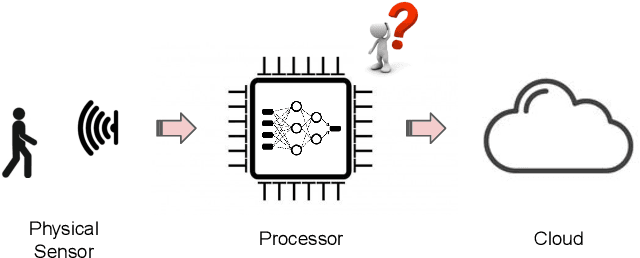

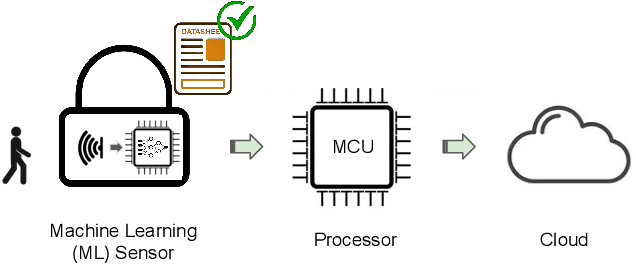
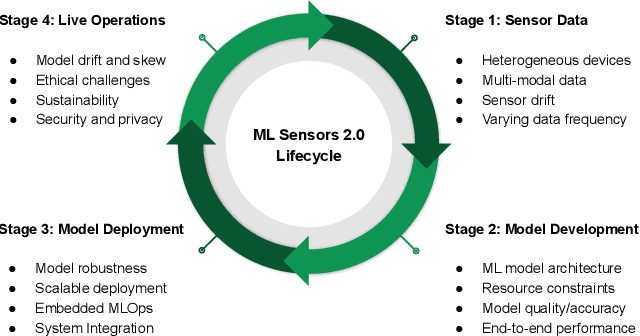
Abstract:Machine learning sensors represent a paradigm shift for the future of embedded machine learning applications. Current instantiations of embedded machine learning (ML) suffer from complex integration, lack of modularity, and privacy and security concerns from data movement. This article proposes a more data-centric paradigm for embedding sensor intelligence on edge devices to combat these challenges. Our vision for "sensor 2.0" entails segregating sensor input data and ML processing from the wider system at the hardware level and providing a thin interface that mimics traditional sensors in functionality. This separation leads to a modular and easy-to-use ML sensor device. We discuss challenges presented by the standard approach of building ML processing into the software stack of the controlling microprocessor on an embedded system and how the modularity of ML sensors alleviates these problems. ML sensors increase privacy and accuracy while making it easier for system builders to integrate ML into their products as a simple component. We provide examples of prospective ML sensors and an illustrative datasheet as a demonstration and hope that this will build a dialogue to progress us towards sensor 2.0.
An Interactive Annotation Tool for Perceptual Video Compression
May 08, 2022
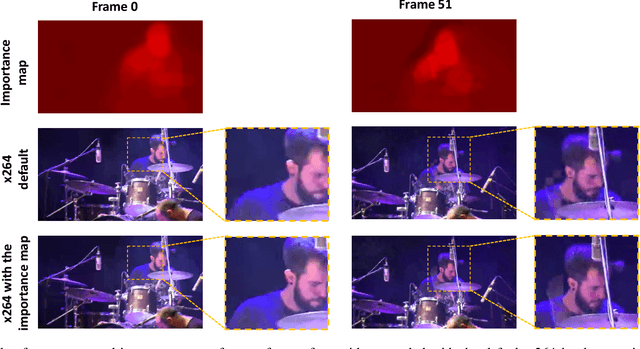
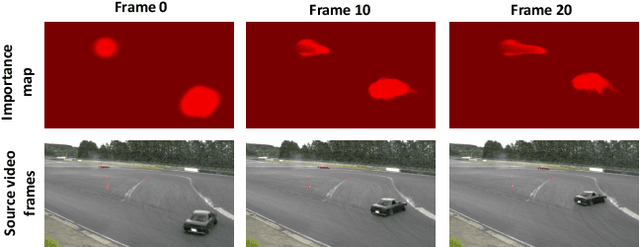
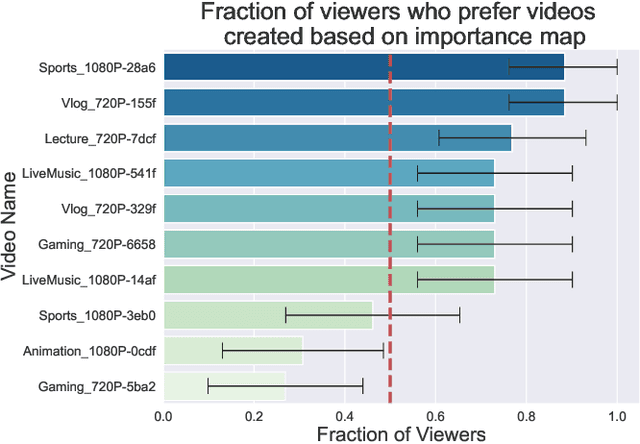
Abstract:Human perception is at the core of lossy video compression and yet, it is challenging to collect data that is sufficiently dense to drive compression. In perceptual quality assessment, human feedback is typically collected as a single scalar quality score indicating preference of one distorted video over another. In reality, some videos may be better in some parts but not in others. We propose an approach to collecting finer-grained feedback by asking users to use an interactive tool to directly optimize for perceptual quality given a fixed bitrate. To this end, we built a novel web-tool which allows users to paint these spatio-temporal importance maps over videos. The tool allows for interactive successive refinement: we iteratively re-encode the original video according to the painted importance maps, while maintaining the same bitrate, thus allowing the user to visually see the trade-off of assigning higher importance to one spatio-temporal part of the video at the cost of others. We use this tool to collect data in-the-wild (10 videos, 17 users) and utilize the obtained importance maps in the context of x264 coding to demonstrate that the tool can indeed be used to generate videos which, at the same bitrate, look perceptually better through a subjective study - and are 1.9 times more likely to be preferred by viewers. The code for the tool and dataset can be found at https://github.com/jenyap/video-annotation-tool.git
Personalized Federated Learning of Driver Prediction Models for Autonomous Driving
Dec 02, 2021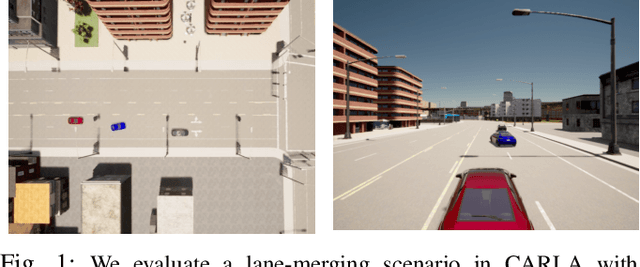


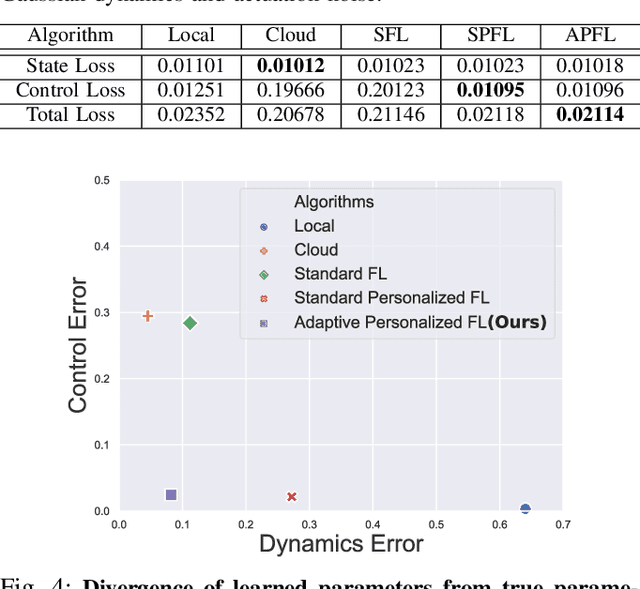
Abstract:Autonomous vehicles (AVs) must interact with a diverse set of human drivers in heterogeneous geographic areas. Ideally, fleets of AVs should share trajectory data to continually re-train and improve trajectory forecasting models from collective experience using cloud-based distributed learning. At the same time, these robots should ideally avoid uploading raw driver interaction data in order to protect proprietary policies (when sharing insights with other companies) or protect driver privacy from insurance companies. Federated learning (FL) is a popular mechanism to learn models in cloud servers from diverse users without divulging private local data. However, FL is often not robust -- it learns sub-optimal models when user data comes from highly heterogeneous distributions, which is a key hallmark of human-robot interactions. In this paper, we present a novel variant of personalized FL to specialize robust robot learning models to diverse user distributions. Our algorithm outperforms standard FL benchmarks by up to 2x in real user studies that we conducted where human-operated vehicles must gracefully merge lanes with simulated AVs in the standard CARLA and CARLO AV simulators.
ML-EXray: Visibility into ML Deployment on the Edge
Nov 08, 2021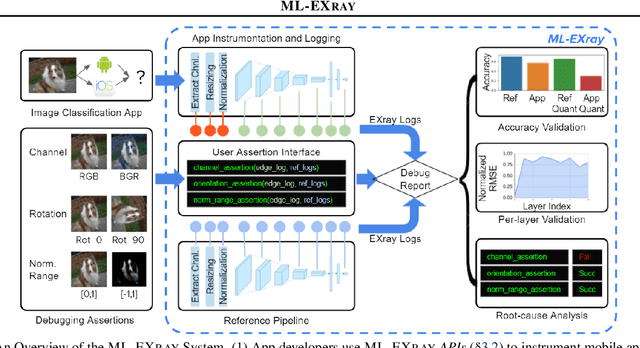
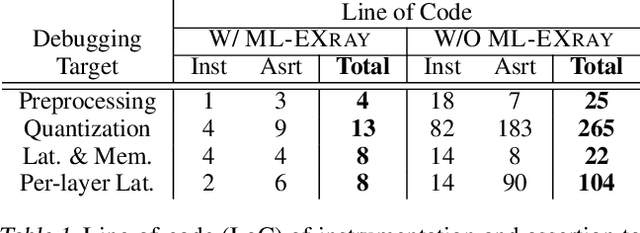
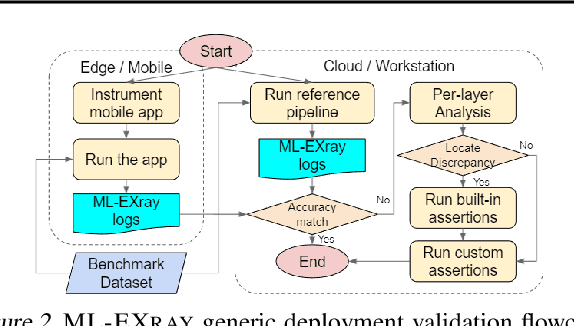
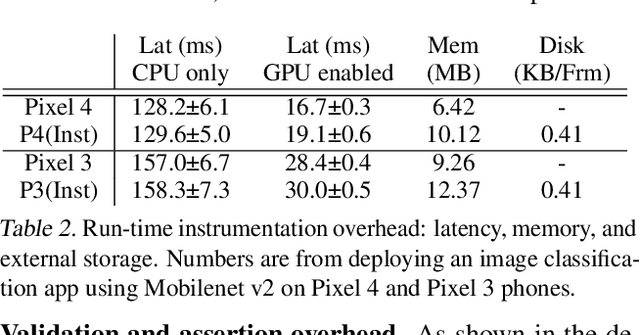
Abstract:Benefiting from expanding cloud infrastructure, deep neural networks (DNNs) today have increasingly high performance when trained in the cloud. Researchers spend months of effort competing for an extra few percentage points of model accuracy. However, when these models are actually deployed on edge devices in practice, very often, the performance can abruptly drop over 10% without obvious reasons. The key challenge is that there is not much visibility into ML inference execution on edge devices, and very little awareness of potential issues during the edge deployment process. We present ML-EXray, an end-to-end framework, which provides visibility into layer-level details of the ML execution, and helps developers analyze and debug cloud-to-edge deployment issues. More often than not, the reason for sub-optimal edge performance does not only lie in the model itself, but every operation throughout the data flow and the deployment process. Evaluations show that ML-EXray can effectively catch deployment issues, such as pre-processing bugs, quantization issues, suboptimal kernels, etc. Using ML-EXray, users need to write less than 15 lines of code to fully examine the edge deployment pipeline. Eradicating these issues, ML-EXray can correct model performance by up to 30%, pinpoint error-prone layers, and guide users to optimize kernel execution latency by two orders of magnitude. Code and APIs will be released as an open-source multi-lingual instrumentation library and a Python deployment validation library.
Data Sharing and Compression for Cooperative Networked Control
Oct 05, 2021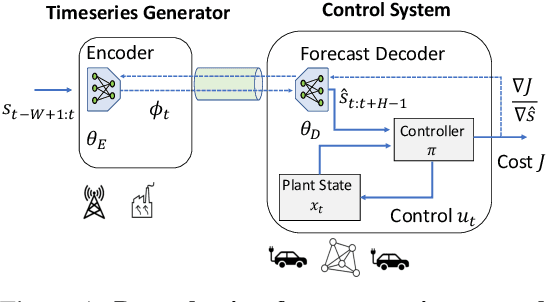
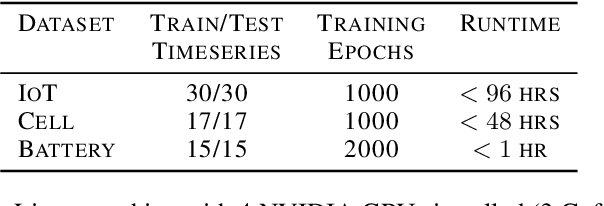
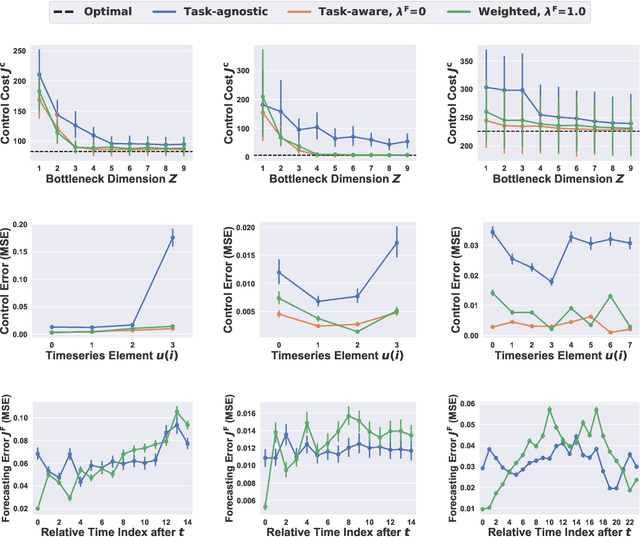
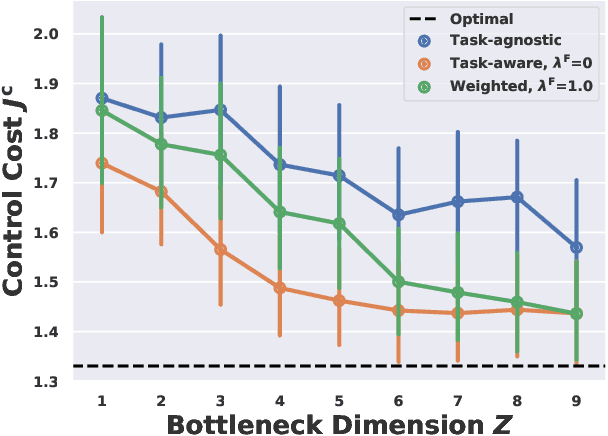
Abstract:Sharing forecasts of network timeseries data, such as cellular or electricity load patterns, can improve independent control applications ranging from traffic scheduling to power generation. Typically, forecasts are designed without knowledge of a downstream controller's task objective, and thus simply optimize for mean prediction error. However, such task-agnostic representations are often too large to stream over a communication network and do not emphasize salient temporal features for cooperative control. This paper presents a solution to learn succinct, highly-compressed forecasts that are co-designed with a modular controller's task objective. Our simulations with real cellular, Internet-of-Things (IoT), and electricity load data show we can improve a model predictive controller's performance by at least $25\%$ while transmitting $80\%$ less data than the competing method. Further, we present theoretical compression results for a networked variant of the classical linear quadratic regulator (LQR) control problem.
Sampling Training Data for Continual Learning Between Robots and the Cloud
Dec 12, 2020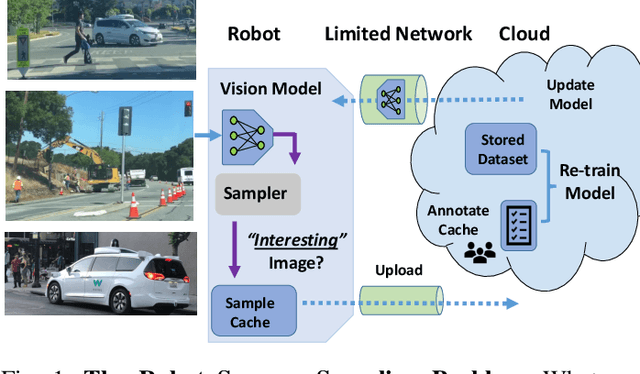
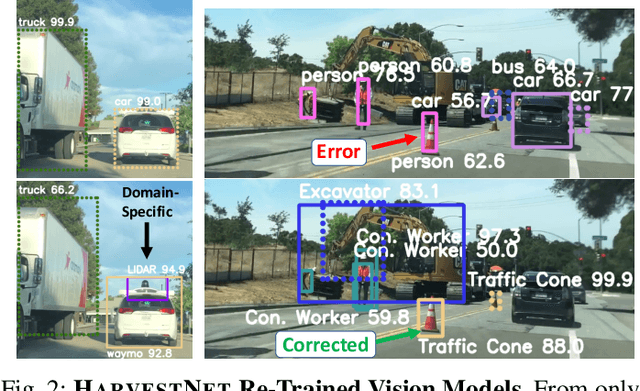
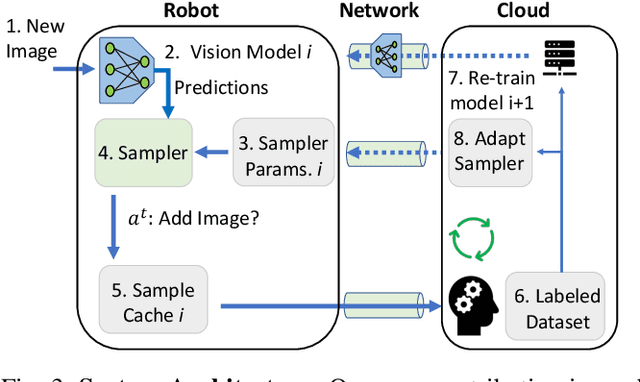
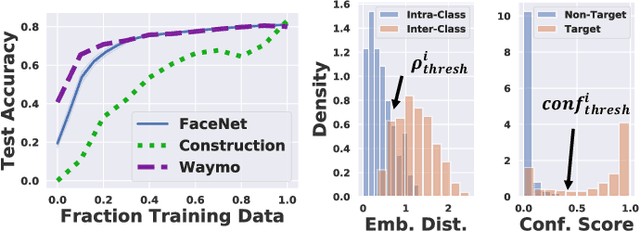
Abstract:Today's robotic fleets are increasingly measuring high-volume video and LIDAR sensory streams, which can be mined for valuable training data, such as rare scenes of road construction sites, to steadily improve robotic perception models. However, re-training perception models on growing volumes of rich sensory data in central compute servers (or the "cloud") places an enormous time and cost burden on network transfer, cloud storage, human annotation, and cloud computing resources. Hence, we introduce HarvestNet, an intelligent sampling algorithm that resides on-board a robot and reduces system bottlenecks by only storing rare, useful events to steadily improve perception models re-trained in the cloud. HarvestNet significantly improves the accuracy of machine-learning models on our novel dataset of road construction sites, field testing of self-driving cars, and streaming face recognition, while reducing cloud storage, dataset annotation time, and cloud compute time by between 65.7-81.3%. Further, it is between 1.05-2.58x more accurate than baseline algorithms and scalably runs on embedded deep learning hardware. We provide a suite of compute-efficient perception models for the Google Edge Tensor Processing Unit (TPU), an extended technical report, and a novel video dataset to the research community at https://sites.google.com/view/harvestnet.
Task-relevant Representation Learning for Networked Robotic Perception
Nov 06, 2020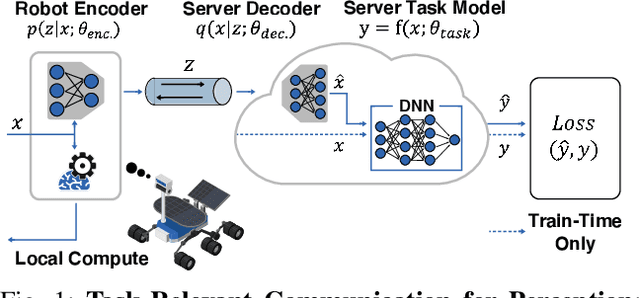
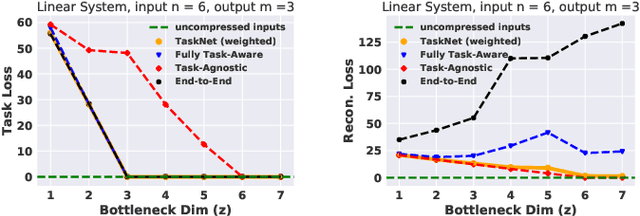
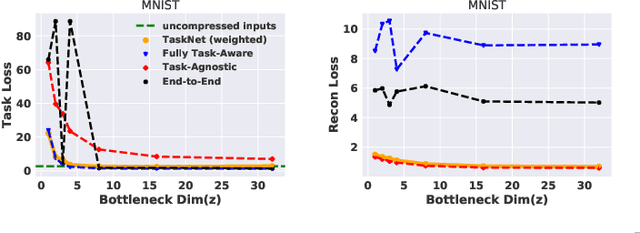

Abstract:Today, even the most compute-and-power constrained robots can measure complex, high data-rate video and LIDAR sensory streams. Often, such robots, ranging from low-power drones to space and subterranean rovers, need to transmit high-bitrate sensory data to a remote compute server if they are uncertain or cannot scalably run complex perception or mapping tasks locally. However, today's representations for sensory data are mostly designed for human, not robotic, perception and thus often waste precious compute or wireless network resources to transmit unimportant parts of a scene that are unnecessary for a high-level robotic task. This paper presents an algorithm to learn task-relevant representations of sensory data that are co-designed with a pre-trained robotic perception model's ultimate objective. Our algorithm aggressively compresses robotic sensory data by up to 11x more than competing methods. Further, it achieves high accuracy and robust generalization on diverse tasks including Mars terrain classification with low-power deep learning accelerators, neural motion planning, and environmental timeseries classification.
Characterizing and Taming Model Instability Across Edge Devices
Oct 18, 2020
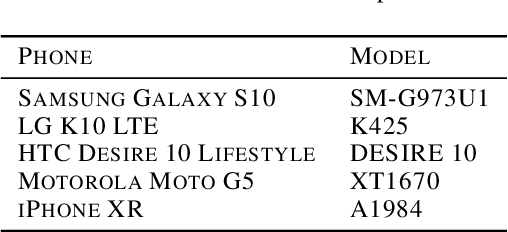
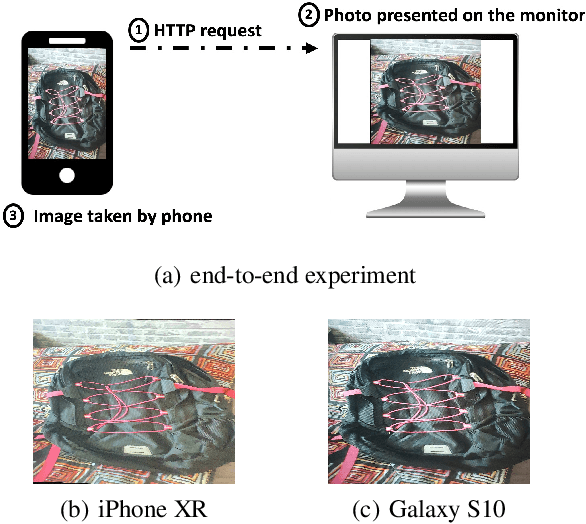

Abstract:The same machine learning model running on different edge devices may produce highly-divergent outputs on a nearly-identical input. Possible reasons for the divergence include differences in the device sensors, the device's signal processing hardware and software, and its operating system and processors. This paper presents the first methodical characterization of the variations in model prediction across real-world mobile devices. We demonstrate that accuracy is not a useful metric to characterize prediction divergence, and introduce a new metric, instability, which captures this variation. We characterize different sources for instability, and show that differences in compression formats and image signal processing account for significant instability in object classification models. Notably, in our experiments, 14-17% of images produced divergent classifications across one or more phone models. We evaluate three different techniques for reducing instability. In particular, we adapt prior work on making models robust to noise in order to fine-tune models to be robust to variations across edge devices. We demonstrate our fine-tuning techniques reduce instability by 75%.
Multi-agent Reinforcement Learning for Networked System Control
Apr 24, 2020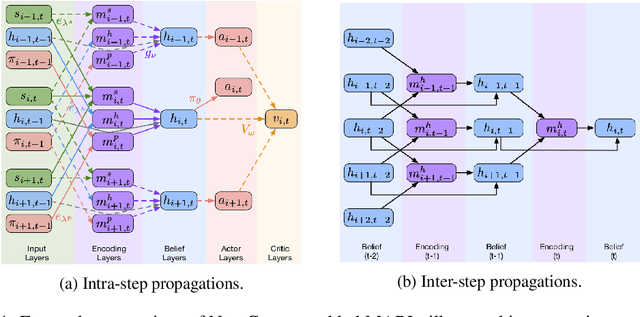

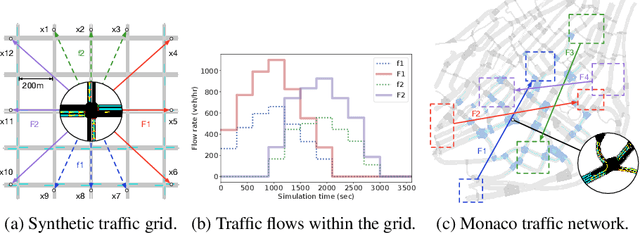

Abstract:This paper considers multi-agent reinforcement learning (MARL) in networked system control. Specifically, each agent learns a decentralized control policy based on local observations and messages from connected neighbors. We formulate such a networked MARL (NMARL) problem as a spatiotemporal Markov decision process and introduce a spatial discount factor to stabilize the training of each local agent. Further, we propose a new differentiable communication protocol, called NeurComm, to reduce information loss and non-stationarity in NMARL. Based on experiments in realistic NMARL scenarios of adaptive traffic signal control and cooperative adaptive cruise control, an appropriate spatial discount factor effectively enhances the learning curves of non-communicative MARL algorithms, while NeurComm outperforms existing communication protocols in both learning efficiency and control performance.
 Add to Chrome
Add to Chrome Add to Firefox
Add to Firefox Add to Edge
Add to Edge